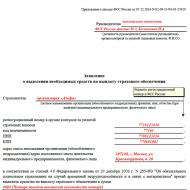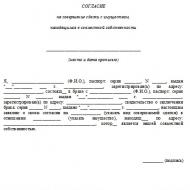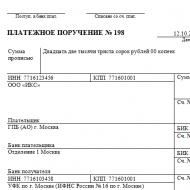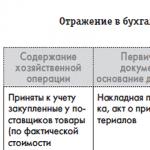
Packing construction waste into bags price. Accounting for construction waste and return of materials from dismantling in the estimate documentation. Estimated prices for material resources
When carrying out repairs or reconstruction activities of a building or structure, dismantling structural elements or finishing coatings, a mass is formed that requires its removal. Cleaning work sites from construction waste must be taken into account when making calculations for these activities. In some cases, the cost of cleaning is documented in a separate document.
Costs when taking into account the cost of waste removal
The cost structure for the implementation of these activities should take into account all the contractor’s expenses, such as:
- remuneration of employed workers;
- costs of operating machines and mechanisms;
- costs for necessary consumables (bags);
- costs associated with placement at the landfill;
- overhead and profit rates;
- taxes and other obligatory payments.
Amount of waste generated
This indicator is determined depending on the scale of repair work carried out at the facility. Its main source is the dismantling of various structural elements.
Each item for dismantling structures contains estimated standards for the generation of construction waste.
For example: price “Disassembly brickwork walls." For a unit of measurement - 10 m3 of masonry - the formation rate is 20.61 tons. When determining the cost of removal, the estimator must sum up the construction waste at all prices that make up the estimate for the repair of the facility.
Some prices do not contain estimated waste generation standards. IN in this case The estimator needs to determine the weight based on the amount of work performed according to the price and the volumetric weight of the component material.
For example, dismantling wooden floor coverings. The coverage area is known according to the estimate (120 m2), and the thickness of the plank covering (40 mm). The volumetric weight of dry wood is 0.65 t*m3. Hence the mass requiring disposal from dismantling the floors will be: 120 * 0.04 * 0.65 = 3.12 tons.
Sample estimate for waste removal
Let’s assume that during the reconstruction of the facility, the mass of accumulated waste was 100 tons. Of this volume, manual loading is required - 20 tons, including the need to pack in bags - 10 tons. For loading by excavator - 40 tons, and for loading by conveyor - 50 tons Transportation is planned to be done by dump truck. Transportation distance – 10 km.
In this case, the calculation was compiled using the basis-index method, using the FER 2001 database as amended in 2014. Transfer to current prices carried out using the index to the FER for the 4th quarter of 2017 (Letter of the Ministry of Construction and Housing and Communal Services of Russia dated December 5, 2017 No. 45082-ХМ/09). Indices are developed and published quarterly by the Russian Ministry of Construction for each region of the Russian Federation.
In the process of dismantling (dismantling) buildings or structures or individual structural elements, as well as during construction, installation and repair construction work returnable materials are generated,
returnable materials with residual value - scrap metal and firewood or
construction garbage.
It is possible that before the start of repairs or construction (reconstruction), there is uncollected waste at the construction site. In this case, the costs of garbage collection are taken into account in the estimated
documentation based on an act signed by representatives of the customer, operating and design organizations, as well as the contractor, if it has already been determined, and then approved by the investor or customer. The act indicates the amount of garbage and its hazard class.
In this case, based on the data from the act, the estimator draws up a local
an estimate that takes into account the costs of developing waste and loading it into vehicle, transportation to the storage site or to the landfill, as well as in column 7 (other costs) - fees for receiving and processing waste at the landfill. These costs are taken into account in Chapter 1 “Preparation of the construction site” of the summary estimate calculation cost
construction.
Construction waste is also generated during construction, installation or repair work:
■
from dismantling buildings and structures, their individual structural elements
or engineering and technological equipment, as well as from punching openings and holes;
■
from that part of the materials that cannot be used in the process
production of work (concrete mixture or mortar hardened in vehicles, fragments of bricks, small blocks and other wall materials, etc.), as well as hard-to-remove losses and waste (end waste, scraps of materials in the manufacture of long parts (products) or during cutting materials due to the non-multiplicity of the dimensions of the structures with the dimensions of the materials used (plates, sheets, etc.). The specified waste materials, as a rule, are taken into account by state
elemental estimate standards;
■
from packaging, props and non-returnable containers used during the transportation of materials and equipment (classification of containers as returnable or non-returnable is determined by the terms of the agreement (contract) for the purchase of inventories);
■ as a result of servicing construction workers - household waste.
The costs of dismantling (dismantling) buildings and structures, their individual structural elements or punching holes are determined according to the collection of standards and prices No. 46 “Work during the reconstruction of buildings and structures.”
The tables of standards in section 06 “Dismantling of residential and public buildings” of the collection GESN-2001-46 “Work during the reconstruction of buildings and structures” provide for 2 methods of dismantling buildings and structures: with preservation (element-by-element disassembly) and without preservation of suitable materials (collapse). The method of disassembly is determined by the construction organization project.
When applying standards 1 and 2 of Table 46-06-009 “Complex dismantling of buildings,” only the costs of dismantling heating systems, hot and cold water supply can be additionally taken into account.
When determining the costs of removing materials from dismantling buildings and structures, engineering and technical equipment or individual structures, as well as from punching openings and holes, the estimator must take into account the data from paragraph 4.11 “Guidelines for the application of federal unit prices for repair and construction work" (FERr-2001) MDS 81-38.2004:
“FERR takes into account the costs of horizontal and vertical (lowering through a window in trays) movement of waste and materials from dismantling in buildings and structures (at a distance of up to 80 m) to the place of their storage within the construction site of the facility at a distance of up to 50 m from buildings and structures.
Vertical transport of waste obtained during dismantling and repair of structures is taken into account for buildings up to 15 m high.
With a higher height of the buildings being repaired, the estimator should take into account additional expenses for vertical transport.
FERR does not take into account and must be paid separately (in cases where this is due to the requirements for the work or the conditions of their production) the costs of packing garbage into bags, the cost of bags and lowering the garbage manually on stretchers or in bags.”
The costs of packing waste into bags should be determined according to the ENiR collection No. 1 “In-building transport work”, § E 1-19-1-a with a coefficient of 1.8, which takes into account the work of two workers when packing waste into bags, or according to timing data.
In the case when the actual distance for garbage removal, confirmed by PIC or POKR, exceeds the total weighted average 80+50 m, taken into account by FERr-2001, it should be included in the estimate documentation
costs for its additional movement within the construction site. When the estimator calculates the actual distance of carrying garbage (reduced to horizontal), it is necessary to take into account that when lowering garbage from the floors or roofs of a building, 8 m should be added to the actual length of the distance traveled for each meter of descent.
If the construction (repair) organization project justifies cramped conditions for dismantling work, then the recommended coefficients for workers' compensation and machine operating costs also apply to loading work. For the costs of transporting structures from dismantling, construction waste, etc. beyond the construction of the facility, as well as the costs of unloading these materials outside the construction site (site overhaul) the above coefficients do not apply.
The volumetric mass of construction waste should be taken as averaged in the dense body of structures according to the following standards:
■ when dismantling concrete structures - 2400 kg/m3;
■ when disassembling reinforced concrete structures— 2500 kg/m3;
■ when dismantling structures made of brick, stone, beating plaster and facing tiles - 1800 kg/m3;
■ when dismantling wooden and frame-fill structures - 600 kg/m3;
■ when performing other dismantling work (except for work on dismantling metal structures and engineering and technological equipment) - 1200 kg/m3.
The mass of dismantled metal structures and engineering and technological equipment is taken according to design data.
The volume of construction waste from the dismantling (destruction) of concrete and reinforced concrete structures is significantly greater than the volume of these structures in a dense body, and therefore the volumetric mass of the waste was taken at 1800 kg/m3.
In cases where in the estimate documentation the mass of construction waste is taken based on the volume of dismantled reinforced concrete structures in a dense body, then the costs of transporting construction waste should also be calculated based on the mass of structures in a dense body - 2500 kg/m3.
The costs of loading construction waste and materials unsuitable for further use, resulting from the dismantling of buildings, structures and equipment, into a vehicle and its removal from the construction site to a storage site or landfill are determined according to current tariffs and are taken into account in local estimates.
“Regulations on the customer during the construction of facilities for state needs in the territory Russian Federation» it is prescribed that the customer must report in the initial data for designing the place for removal and storage of excess soil, construction waste and materials from
disassembled, unsuitable for further use. Based on these data, the distance for removing soil and construction waste from the construction site is determined.
In the case when the initial data for design by the customer does not indicate the place of removal or storage of excess soil, construction waste, in local estimates the costs of transporting them from the construction site to the place of its disposal (recycling) or temporary storage should be taken on the basis of the optimal route diagram movement vehicles on this route or act.
Based on the above data, the estimator draws up a local estimate, which takes into account the costs of loading waste into a vehicle, transporting it to a storage location or to a landfill, as well as in column 7 (other costs) - fees for receiving and processing waste at the landfill. Transportation costs should be taken into account in local estimates in column 9 “Operation of machines” without highlighting driver remuneration.
Costs associated with the demolition or dismantling of buildings and structures are taken into account in Chapter 1 “Preparation of the construction site” of the consolidated construction cost estimate.
In the absence of the necessary standards or unit prices in the collection (parts of the collection) No. 46, the costs of disassembly or dismantling are determined according to the relevant standards or unit prices from the collections (parts of the collections) for construction and special construction, installation or repair and construction work with application to the relevant elements from the norm, as well as to funds for wages and to the costs of operating construction machinery and mechanisms specified in the unit price, reducing factors. When dismantling prefabricated concrete, reinforced concrete or wooden structures, this coefficient is taken into account as 0.8, metal structures - 0.7, external pipeline networks - 0.6, and internal ones - 0.4.
The costs of dismantling or removing structures from their working position, freeing structures from fastening and removing loads, as well as subsequent installation are not taken into account in the prices of the FER-2001-46 collection. In cases where, when dismantling (disassembling) concrete, reinforced concrete or metal structures, it becomes necessary to provide scaffolding for
support for dismantled (disassembled) structures during their dismantling (disassembly), directly in local estimates according to the prices of the collection FER-2001-09 " Metal constructions» taken into account additional work for installation and dismantling of supporting scaffolding.
The costs associated with the removal of waste generated as a result of dismantling structures during the reconstruction of buildings and structures should be taken into account in the manner given in paragraph 3.3 of the Directions for Use
federal unit prices for construction and special construction work - MDS 81-36.2004.
When dismantling equipment, the value of the specified coefficient depends on its further use. Thus, if further use of the equipment is expected after its long-term storage, a coefficient of 0.7 is accepted, without the need for storage - 0.6. This provision also applies to cable dismantling and subsequent
installation along a new route (rerouting); equipment is not subject to further use (intended for scrap) with disassembly and cutting into parts - 0.5; - the same, without disassembling and cutting - 0.3.
If the dismantled equipment is not subject to further use, then when disassembling and cutting into parts, a coefficient of 0.5 is accepted, and without disassembling and cutting - 0.3.
The specified coefficients do not apply to the cost of material resources taken into account during the installation of equipment. Material consumption
resources actually used during equipment dismantling are taken into account additionally when drawing up a local estimate for dismantling (in fact, for similar types of work).
Coefficients for the cost of work on dismantling equipment are established based on the condition of its dismantling (disassembly) in an unsecured state, freed from seals in the structure, as well as from welding or other fastening with other structural elements.
Additional costs associated with punching and sealing grooves and nest niches in existing structures into which dismantled (disassembled) equipment is embedded, as well as cutting off embedded parts or metal structure elements to which it is welded, should be taken into account additionally in local estimates based on design solutions, or inspection reports.
If, when dismantling (disassembling) equipment, it becomes necessary to provide scaffolding to support the dismantled equipment during its dismantling (disassembly), additional work on installing and disassembling supporting scaffolding should be taken into account additionally in local estimates.
When determining the estimated cost of equipment dismantling by applying reduction factors to the installation cost (without taking into account the cost of material resources), only those types of work that were not included in the work and taken into account in the standard (price) for the installation of this type of equipment can be additionally taken into account. The standards (prices) for the installation of lamps take into account the installation of brackets and the connection of lamps; therefore, when determining the cost of dismantling lamps, dismantling the brackets and disconnecting the lamp from the network are not additionally taken into account.
In cases where the FER or FERr collections do not provide unit prices for the installation (arrangement) of structures that are subject to dismantling (disassembly) according to the project, the costs of dismantling can be included in the estimate documentation according to individual unit prices developed and approved in accordance with the established procedure .
In cases where structures, materials and products obtained as a result of dismantling or demolition of buildings and structures are recognized as suitable for reuse, then local estimates indicate their return value at the price of possible sale (determined by market conditions and limited only by the value of the similar cost of a new one). material or product), minus
these amounts of expenses for bringing them into a condition suitable for reuse and delivery to places of storage or sale. The cost of returnable packaging included in the cost of equipment and other material resources is taken into account in a similar manner.
Amount of refunds at the preparation stage project documentation may be determined based on the customer’s expert assessment reflected in the design assignment or initial data on
development of estimate documentation.
All returnable materials received at the facility are the property of the customer (facility owner) and are used by him for their intended purpose.
The volume of receipt of returnable materials, products and construction waste generated at the sites is determined design and estimate documentation or based on the results of an inspection of dismantled structures.
Refunds of incoming materials from dismantling temporary water supply pipelines, gas pipelines, etc. should be determined
on the basis of an act in which the condition of the materials from disassembly must be established, the amount of inevitable losses when dismantling the pipeline. The cost of pipes when dismantling a temporary pipeline should be taken at the average selling prices prevailing in the region, minus the costs of bringing them into a suitable condition for reuse and delivery to storage areas. Based on established practice, refund amounts that take into account the cost of materials from dismantling temporary pipelines are about 80% of the cost
materials for their device.
If the local estimate accepts the installation of a sheet piling without taking into account the turnover of piles, and the sheet piling is removed, then the volume of return of sheet piling steel is taken into account in the amount of 85% of the mass of sheet piles to be removed.
The percentage of yield of suitable stone to determine its return value according to the norm and price 03-008-1 of the collection (part) No. 27 “ Car roads» It is approximately recommended to take 60%. The actual yield of suitable stone for further use is determined at the site of work and is documented in the appropriate act.
The possibility of reusing materials from dismantling water supply and sewerage networks is established by an agreement between the customer
and the contractor.
Refunds from the delivery of scrap metal are taken into account by excluding from the scrap metal acceptance price established by the Vtorchermet database the costs of loading and delivering scrap metal from the construction company.
sites to the scrap metal collection point.
The amount of asphalt concrete scrap or crumbs obtained as a result of dismantling the asphalt concrete pavement is determined at the work site and is documented in the appropriate act. When determining return amounts, you should additionally take into account the costs of loading it, if
it is not taken into account in the price for dismantling and transportation of asphalt concrete scrap to a recovery or asphalt concrete plant.
A similar procedure takes into account the cost of secondary raw materials (firewood, crushed stone, etc.) obtained as a result of dismantling or demolishing buildings.
The return cost of dismantled heating boilers in local estimates should be taken into account conditionally at the rate of at least 30% of the selling price for the types of boilers being dismantled. This requirement is given in paragraph 1.23 of the collection of prices No. 46 “Work during the reconstruction of buildings and structures.”
If it is impossible to use or sell materials from dismantling or associated mining, their cost is not taken into account in the refund amounts.
Refundable amounts are not excluded from the total of the local estimate (estimate), object estimate (estimate) and summary
construction cost estimate.
Refunds from the sale of materials, parts, equipment and production and business equipment received from the dismantling of temporary buildings and structures on the customer’s balance sheet are determined by calculations that take into account the sale of these materials and parts at the current price level (minus the costs of bringing them into a suitable condition and delivery to storage locations).
The agreement (contract) establishes the contractor's responsibility for receiving returnable materials in the volume and range specified in the design documentation, as well as the procedure for their use.
Materials from the dismantling of non-title temporary structures are taken into account on the basis of free-form internal acts approved by the management of the contracting organization.
The costs of cleaning up construction (technological) waste generated during the period of work (hard-to-remove losses and waste, non-returnable containers and household waste), loading and removing it to a landfill or processing site are included in the costs of organizing work on construction sites, which are taken into account as part of the overhead rates (clauses 11 and 12 of section II of Appendix 6 to Methodical instructions on determining the amount of overhead costs in construction - MDS 81-35.2004 and MDS 81-34.2004). Consequently, they are not subject to additional accounting in the estimate documentation.
Letter No. 10-466 of the Gosstroy of Russia dated December 28, 1999 explained that “accounting for the costs of disposal of unusable soil and waste transported to a landfill is in force regulatory documents not provided." Payment for services provided for placement and processing at sites
specialized organization of construction waste and materials from
disassembly, unsuitable for further use, is taken into account in the estimate documentation in column 7 (other costs).
Volumes of construction waste and other construction waste, their hazard class are taken according to the regulations for the management of construction waste, which should be part of the design
documentation.
1. Introduce, from January 1, 2007, additional elemental estimate standards and unit prices for cleaning premises from construction waste - packing construction waste into bags (Appendix).
2. Add the specified norms and prices to the Collections of ESNr (ERr)-2001-69.
3. These elemental estimate standards and unit prices can be used by customer organizations and contractors, regardless of their departmental affiliation and forms of ownership, and are intended to determine the estimated cost of construction using resource and base-index methods, as well as for payments for completed construction, repair and construction works and installation work.
4. Unit prices were developed for the 1st base region of the Russian Federation (Moscow region) at the price level as of January 1, 2000 from regional coefficient 1.0. When applying prices in the constituent entities of the Russian Federation, they should be linked to local conditions taking into account territorial correction factors in the basic price level as of 01/01/2000.
Application
to the letter from the Coordination Center for Pricing
and estimate standardization in construction
dated January 28, 2007 N KTs/P193
Elemental estimate standards
Collection ESNr-69
"Other repair and construction work"
Table ESNr 69-01-017 Cleaning premises from construction waste
Meter: 1t
Unit prices
Collection ERr-69
"Other repair and construction work"
In estimated prices as of 01/01/2000.
| NN prices | Name and characteristics of construction work and structures | Unit measurements | Direct costs, rub. | Including, rub. | Labor costs of construction workers, person-hours | |||
|---|---|---|---|---|---|---|---|---|
| wages for construction workers | machine operation | materials | ||||||
| (Codes of unaccounted materials) | Name and characteristics of materials not included in prices | Total | incl. drivers' wages | consumption of unaccounted materials | ||||
| 1 | 2 | 3 | 4 | 5 | 6 | 7 | 8 | 9 |
| Table 69-01-017 Cleaning premises from construction waste Meter: 1 t | ||||||||
| 69-01-017-2 | Bagging construction waste | 1 t | 42,51 | 19,34 | - | - | 23,17 | 2,48 |
Estimated prices for material resources
Letter of the Coordination Center for Pricing and Estimated Standardization in Construction dated January 28, 2007 N KTs/P193 “On the introduction of elemental estimate standards and unit prices for cleaning premises from construction waste to the Collections ESNr (ERr)-2001-69 “Other repair and construction work"
















